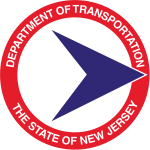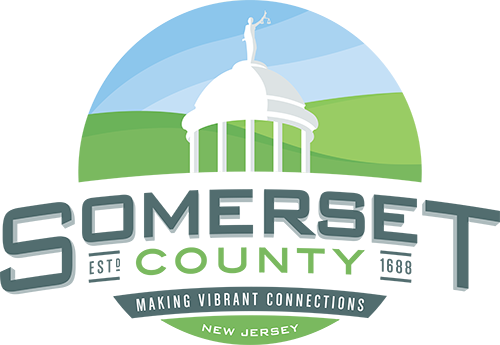About The Project
Somerset County and Morris County, in coordination with the North Jersey Transportation Planning Authority (NJTPA) and the New Jersey Department of Transportation (NJDOT), are conducting an LCD study to determine appropriate improvements to the Valley Road Bridge. The project goals are to address the structural deficiencies of the bridge and increase safety for the traveling public.
The LCD study is the first step of the project development process The process includes the following: evaluation of existing conditions; development a Purpose and Need Statement; fulfillment of an Alternatives Analysis; and selection of a Preliminary Preferred Alternative. Community participation and stakeholder coordination is integral throughout all stages of the study. Throughout the process, local officials, community stakeholders and the public will have an opportunity to provide comments and questions for consideration. Please see the section below for more details on the current study.
- Project Kick-off (January 2018)
- Data Collection (Early 2018): Review existing documentation, mapping and surveying, cultural resource report, etc.
- Purpose and Needs Statement Developed (Early 2018)
- Alternative Analysis (Mid 2018): Develop engineering alternatives and conduct impact assessment of alternatives
- Selection of Preliminary Preferred Alternative (Late 2018)
- Documentation (Late 2018/Early 2019): Prepare cost estimates, NEPA classification and documentation, preliminary engineering next steps, etc.
- Draft Local Concept Development Report (Late 2018)
- Final Local Concept Development Report (Late 2018)
Location: Bernards and Long Hill Townships
About the Bridge:
The existing Valley Road Bridge over the Passaic River is a three-span concrete encased multi-stringer bridge built in 1931 with an approximate total span length of 100 feet. The bridge carries two 13.5’ lanes, one 2’ wide westbound shoulder, one 4’ wide eastbound shoulder and two 5.5’ wide sidewalks.
Step 1 – Evaluate Existing Conditions
Data on existing conditions, including bridge condition, traffic conditions, crash data, local demographics, and environmental information, will be collected to help identify the study’s purpose and need, as well as the study team’s goals and objectives.
Step 2 – Develop Purpose and Need Statement
A Purpose and Need statement will be developed early in the project development process. This statement outlines goals and objectives that should be included as part of a successful solution to the problem, and sets the stage for the development of alternatives.
Step 3 – Develop an Alternatives Analysis
During the Alternatives Analysis process, a range of alternatives will be developed and evaluated to ensure that all options have been considered before selection of the Preliminary Preferred Alternative (PPA). The intention of Alternatives Analysis is to satisfy the identified project objectives while minimizing impacts to environmental features, access driveways, and adjacent intersections. The conceptual alternatives may include a “No-Build” alternative, rehabilitation alternative or full replacement alternative.
Step 4 – Select a Preliminary Preferred Alternative (PPA)
A PPA will be recommended based on data from public outreach, existing conditions, environmental screening, constructability, anticipated impacts, and estimated construction costs. A conceptual plan for the PPA will be developed for the final Concept Development Report. Once a PPA is recommended with resolution of support by the municipalities and the County, and with concurrence from the Inter-Agency Review Committee (IRC), the project would move to Preliminary Engineering.
Federally-funded projects require an environmental screening that follows the National Environmental Policy Act (NEPA) process. The NEPA process enables the project sponsor to establish existing socioeconomic and environmental conditions in the study area, and weigh the potential impacts that may be caused by the range of alternatives under consideration. When analyzing the alternatives, federal and state regulations require careful assessment and mitigation or avoidance of the potential negative environmental impacts. Environmental resources analyzed include air, noise, hazardous or contaminated sites, parks, wetlands, water resources, social and economic impacts, and cultural resources such as historic structures and facilities.
Local officials, community stakeholders, agency representatives, and the general public will have an opportunity to provide comments and questions for consideration throughout the study. The primary tasks of stakeholders include the following:
- Assist in the development of the Project Purpose and Need statement
- Assist in the development of conceptual alternatives
- Assist in the recommendation of the Preliminary Preferred Alternative (PPA) based on the Project Purpose and Need
Develop Purpose and Needs Statement: Early 2018
Develop Alternatives Analysis: Mid 2018
Selection of Preliminary Preferred Alternative: Late 2018
Documentation: Late 2018/Early 2019
Final Local Concept Development Report: Early 2019
Local Capital Project Delivery (LCPD) Program
The LCD Study is the first phase for federally funded transportation improvement projects. The LCPD Program provides funding to NJTPA sub regions—the 15 city and county members of the NJTPA—to prepare proposed transportation projects for eventual construction with federal funding.
This preparation involves completing the multi-step Capital Project Delivery Process developed by NJDOT. This process is designed to streamline project development and provide a common and consistent framework for federally funded projects at the local, regional and state level.
Local Capital Project Delivery Process
| 1. Local Concept Development | 2. Local Preliminary Engineering | 3. Final Design/ROW Acquisition | 4. Construction |
|---|---|---|---|
| Purpose & Need Statement | Approved Design Exception Report | Construction Contract Documents & PS&E Package | Completed Construction |
| Data Collection & Environmental Screening Report | Cost Estimates (Final Design, ROW & Construction) | Environmental Reevaluations | As-Built |
| Selection of Preliminary Preferred Alternative | Approved Environmental Document | Environmental Permits | Update & Finalize Design Communications Report |
| Concept Development Report | Approved Project Plan | Acquisition on ROW | Close-out Documentation |
| NEPA Classification | Preliminary Engineering Report | Update Design Communications Report | |
| Create Design Communications Report | Update Design Communications Report | ||
| Initial Public Outreach & Involvement | Continued Public Outreach & Involvement | Continued Public Outreach & Involvement | Continued Public Outreach & Involvement |
Project Team




The Project Team is composed of members representing Somerset and Morris Counties, NJTPA, NJDOT, McCormick Taylor (the prime consultant design engineering firm), and other supporting consulting firms for engineering, environmental, cultural and community involvement support. See directory of project team staff and contact information below:
| Richard Brundage, P.E. North Jersey Transportation Planning Authority Project Manager rbrundage@njtpa.org |
Sascha Frimpong North Jersey Transportation Planning Authority Manager, Local Programs sfrimpong@njtpa.org |
| Meghan Paccione (Primary Contact) Morris County Senior Engineer mpaccione@co.morris.nj.us |
Brian Maurer (Primary Contact) Somerset County Principal Bridge Engineer maurer@co.somerset.nj.us |
| Christopher Vitz Morris County Director of Public Works & County Engineer cvitz@co.morris.nj.us |
Roslyn Khurdan Morris County Assistant County Engineer rkhurdan@co.morris.nj.us |
| Deval Desai New Jersey Department of Transportation deval.desai@dot.nj.gov |
Pamela Garrett New Jersey Department of Transportation pamela.garrett@dot.nj.gov |




